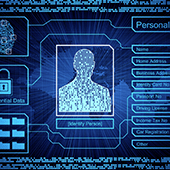 Once the stuff of science fiction, artificial intelligence (AI) is currently on track to becoming a key part of modern businesses. According to experts, 2020 is the year that 85% of all customer interactions with a business will occur via machine learning programs. eCommerce businesses are among those that will benefit greatly from the use of AI to interact and serve their customers. Here’s how.
Once the stuff of science fiction, artificial intelligence (AI) is currently on track to becoming a key part of modern businesses. According to experts, 2020 is the year that 85% of all customer interactions with a business will occur via machine learning programs. eCommerce businesses are among those that will benefit greatly from the use of AI to interact and serve their customers. Here’s how.
Predicting what your customers want
AI has many uses in eCommerce, benefiting both the business and the customers. For instance, machine learning, a subset of AI, can be used to identify customer habits and their interests based on search histories (both inside and outside of a specific business’s site).
With the proper configuration, machine learning can be used to analyze shopping behaviors to customize and tailor the online shopping experience to specific users. Product recommendations, pairings, and promotions can target individuals, improving the customer experience, and in turn, your bottom line.
“I’m looking for something a little more…”
Machine learning is also great for cataloging products. In the past, businesses would send out dense and cumbersome product catalogs where customers could find — often with difficulty — the items they were looking for.
Today, consumers are able to upload photographs of a product — say, an article of clothing — that’s similar to what they want to purchase or pair with another. Through AI, a website will be able to analyze the photographs and make suggestions based on data from the uploaded images.
Customers can still talk to a “representative”
More and more users are relying on eCommerce over face-to-face sales interactions, thanks to advances in “plain language” systems. Machine learning is getting better at interpreting conversations and answering with natural-sounding responses. By replicating the in-person shopping experience, eCommerce businesses can shift away from the overheads of brick-and-mortar stores. This will allow them to make significant savings in capital expenditures and human resources, all while reducing the opportunity for costly human error as well.

 With over 150 million active subscribers, Office 365 is, unsurprisingly, on top of hackers’ minds. And now, hackers are using a technique that doesn’t even require users to give up their credentials. Learn how they do it and get protected.
With over 150 million active subscribers, Office 365 is, unsurprisingly, on top of hackers’ minds. And now, hackers are using a technique that doesn’t even require users to give up their credentials. Learn how they do it and get protected. People today expect Wi-Fi access when they’re visiting your office. However, setting up your Wi-Fi the wrong way can create a stressful experience for them. Additionally, this can also expose your confidential information to malicious hackers. So what’s the right way to do it?
People today expect Wi-Fi access when they’re visiting your office. However, setting up your Wi-Fi the wrong way can create a stressful experience for them. Additionally, this can also expose your confidential information to malicious hackers. So what’s the right way to do it? Whether it be cloud, mobile, or on-premises, every technology you use stores confidential data that are accessed by your employees. So how do you guarantee the safety of said data from cyberthreats like identity theft, phishing attacks, and more? Identity and access management (IAM) is the answer, and here’s why.
Whether it be cloud, mobile, or on-premises, every technology you use stores confidential data that are accessed by your employees. So how do you guarantee the safety of said data from cyberthreats like identity theft, phishing attacks, and more? Identity and access management (IAM) is the answer, and here’s why. In the cybersecurity world, an insider threat is an individual or business partner who uses company data inappropriately. Today’s companies must take proactive steps to prevent insider threats, which is why we put together some tips and tricks.
In the cybersecurity world, an insider threat is an individual or business partner who uses company data inappropriately. Today’s companies must take proactive steps to prevent insider threats, which is why we put together some tips and tricks.